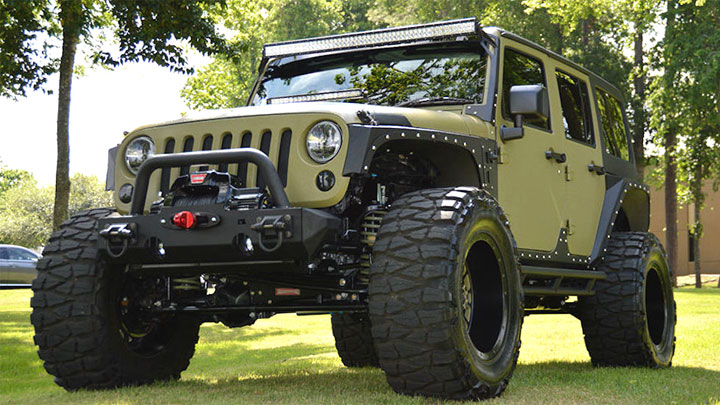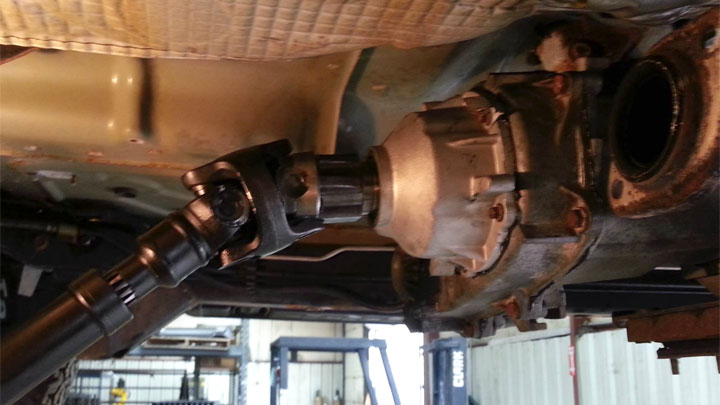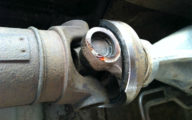Last Updated on July 25, 2022
The modern automobile undergoes countless hours of engineering, design, and development, before ever being released to consumers. This lengthy process ensures that a vehicle operates in the safest and most efficient manner possible.
However, with time, we as consumers often come up with a host of modifications that we hope to implement, in a bid to tailor our vehicles to our own personal needs. This is especially true for those who own trucks and SUVs, intended for use in specialty applications. At times, the installation of such specialty components can actually enhance a vehicle’s ability to operate in the capacity that we desire.
One such component that is often installed on an aftermarket basis is a Slip Yoke Eliminator (SYE). The installation of this specialty part eliminates a number of issues that commonly arise when lifting the ride height of four-wheel drive vehicles, and is one of the most common modifications for the Jeep Wrangler and Cherokee. The addition of a slip yoke eliminator is also a popular modification for the owners of any lifted truck.
Read on to learn more about the various uses of an aftermarket slip yoke eliminator, as well as how to determine whether or not the purchase of a slip yoke eliminator is right for you.
See Also: Why Are Jeep Wranglers So Expensive?
What Is a Slip Yoke Eliminator?

A slip yoke eliminator is an aftermarket component that is installed to eliminate a vehicle’s stock slip yoke. This slip yoke itself is installed by a vehicle’s manufacturer to facilitate driveline movement when traversing uneven terrain.
Essentially, a transfer case-mounted segment of the driveshaft (slip yoke) provides necessary driveline play, via inward/outward movement along with a set of splines. This allows a driveshaft’s U-joints to continue oscillating as intended.
On the other hand, this stock slip joint is removed from service whenever a slip yoke eliminator is installed. A custom slip yoke eliminator, along with a specialty drive shaft eliminates the need for a slip yoke in its entirety, while also minimizing driveline vibration along the way.
Simply put, a pair of closely-positioned and properly phased U-Joints included in a slip yoke eliminator assembly provides the necessary driveline play, to compensate for variations in terrain.
Read Also: Common Symptoms of a Bad Slip Yoke
How Does It Work?
A slip yoke eliminator works by substituting the use of a slip yoke for a shorter transfer case output shaft, designed to couple effortlessly to a CV (Constant Velocity) driveshaft. In itself, this principle is of exceptional value when lifting an otherwise stock vehicle’s ride height, due to the fact that a slip yoke is pushed beyond its typical range of travel, in such applications.
The use of a slip yoke eliminator and CV driveshaft negates the use of a traditional slip yoke by positioning two phased U-joints within close proximity to one another, allowing for continuous articulation, no matter the terrain across which a vehicle travels.
The installation of such components also levels out the driveline geometry of a lifted vehicle, in order to nullify vibration.
Installing a slip yoke eliminator varies in complexity, based upon the model of the vehicle receiving such modifications. However, a chore of this nature generally involves replacing a transfer case’s tailshaft segment, while simultaneously installing a new vehicle speed sensor tone ring and all assorted hardware.
As mentioned, the installation of a replacement CV driveshaft will also be necessitated.
Related: 4-Wheel Drive vs All-Wheel Drive
When Is a Slip Yoke Eliminator Necessary?

The installation of a slip yoke eliminator is not necessary on any vehicle that retains its stock ride height. This is due to the fact that a standard slip yoke is designed to provide ideal driveline geometry for the vehicle on which it is installed. Therefore, such modifications are generally of no concern to those not currently contemplating the installation of a lift kit.
Generally speaking, a slip yoke eliminator should be installed on any vehicle that has been lifted to the point that its driveline geometry cannot be corrected with the installation of a transfer case drop kit.
In the majority of cases, this applies to any vehicle with a lift of greater than 2-inches. However, virtually all vehicles featuring a lift of 4-inches or greater will require the use of a slip yoke eliminator.
How Do You Know If You Have a Slip Yoke Eliminator?
The best way to tell if your vehicle currently utilizes a slip yoke eliminator is through visual inspection. The presence of a slip yoke will be evident by the sight of a splined segment of the driveshaft, connecting the transfer case output shaft to a vehicle’s main driveline.
In many cases, the Teflon-like coating that covers these splines will be clearly visible. This coating is often blue in color and slick to the touch.
On the contrary, a slip yoke eliminator can be identified by the sight of two independent U-Joints, positioned within close proximity to one another.
These U-Joints will be found within a matter of inches of the transfer case’s output shaft housing. They are positioned in a manner that eliminates the need for the slippage typically supplied by a driveline’s slip yoke.
Slip Yoke Eliminator Installation Cost

The exact price that one can expect to pay for slip yoke eliminator installation tends to vary somewhat from one model of truck or SUV to the next, both in terms of parts and labor.
In general, a much larger array of slip yoke eliminators is currently offered for the Jeep Wrangler and Cherokee, than for pickups such as the Chevy Silverado or Ford F150, leading to greater parts cost variance.
However, one can typically expect to pay an average price of between $800-$1,100 for the installation of an aftermarket slip yoke eliminator and custom CV driveshaft. The bulk of this price can be directly attributed to the cost of parts, with labor costs typically coming in at somewhere in the range of $150-$400.




